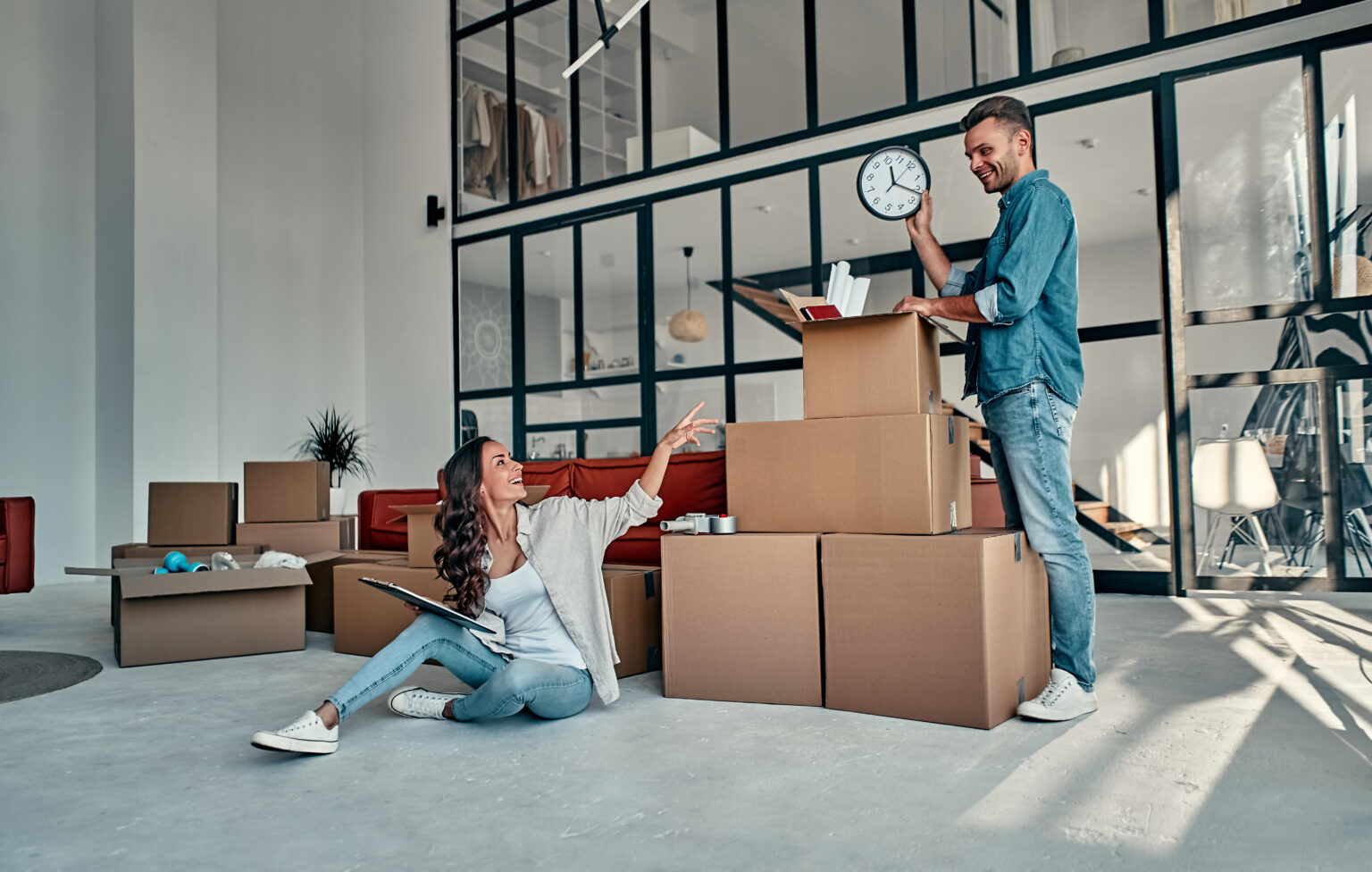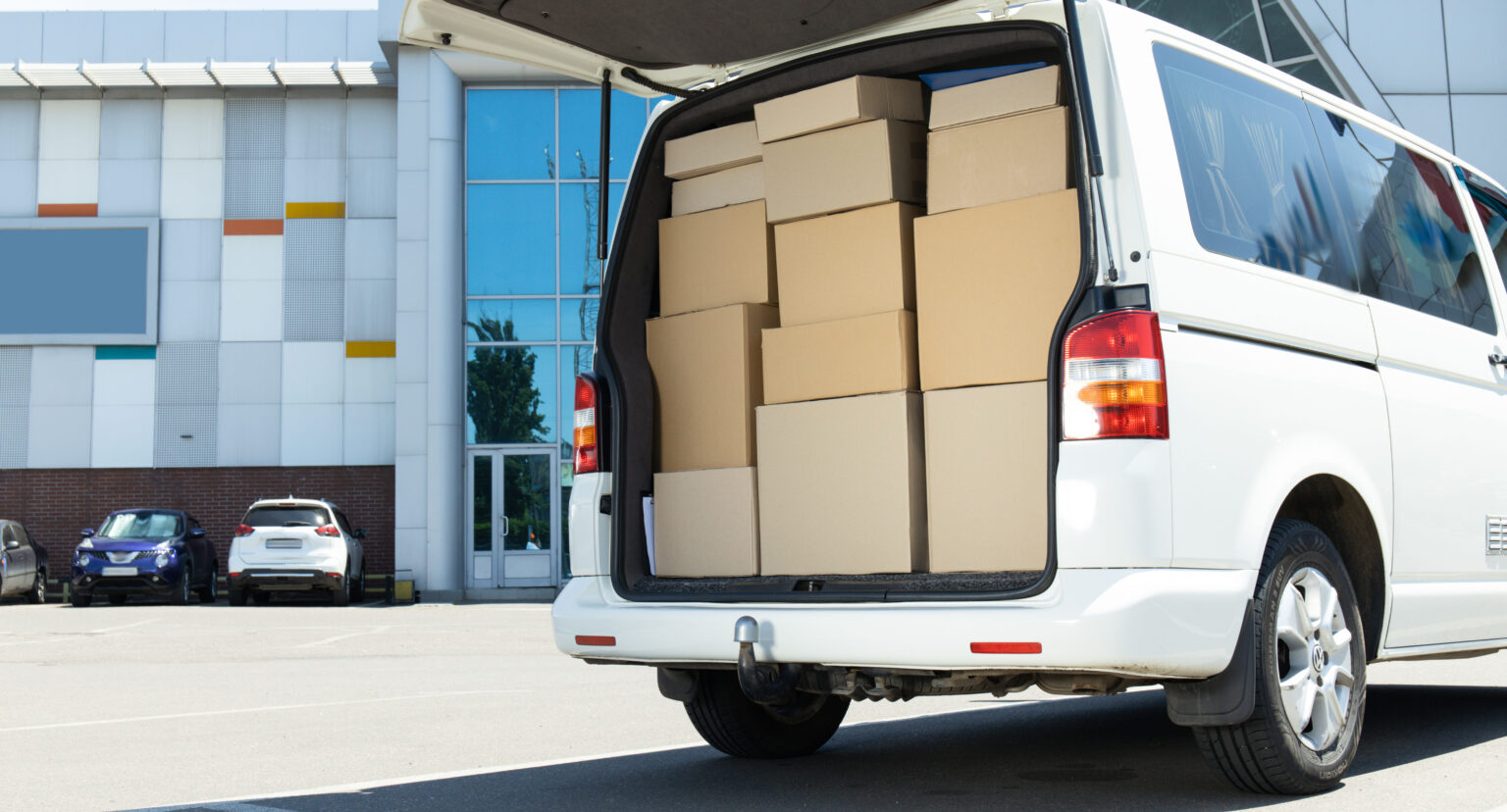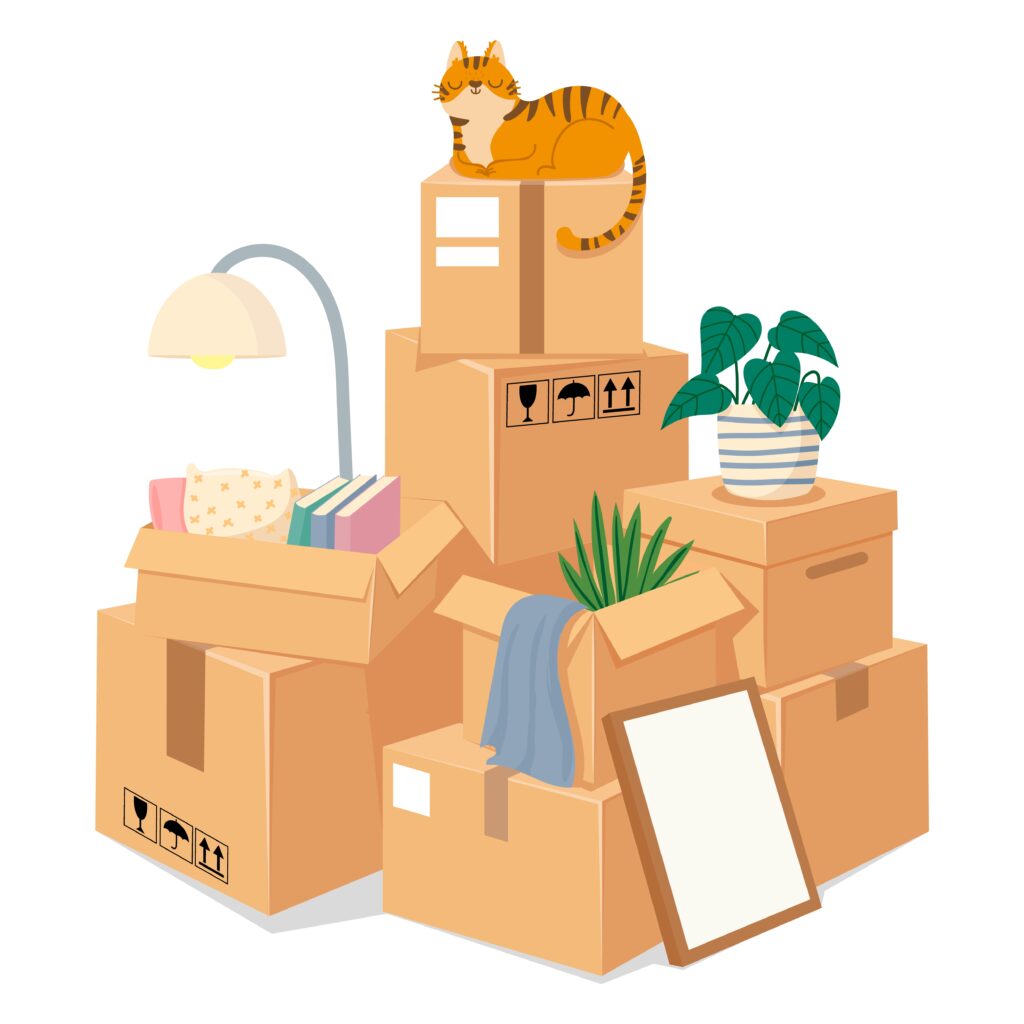Transform your moving experience with ‘Top 5 Packing Techniques for an Efficient Move’. This comprehensive guide takes you through innovative strategies for decluttering, effectively packing your items, and organizing for the big day. Discover how to pack like a pro, safeguard your delicate belongings, and manage your move with ease. Perfect for those seeking a well-planned, stress-free relocation, our guide offers practical advice and insider tips to make your move as smooth as possible.
Start with a Plan
Inventory and Categorization
Embarking on a packing journey without a plan is like navigating without a map. The first crucial step is creating an inventory of your items. This might seem time-consuming, but it pays off in organizational dividends. By listing everything you own, you not only keep track of your belongings but also get an opportunity to declutter.
Once your inventory is ready, the next step is categorization. This involves grouping items based on their nature. For instance, categorize items as fragile, heavy, essentials, or seasonal. Fragile items need special care and packaging, heavy items might require additional manpower or equipment, and essentials are what you’ll need immediately upon arrival at your new home. Here’s a tip: Color-code your inventory list. Use different colors for different categories – this visual cue makes it easier during both packing and unpacking.
Scheduling and Supplies

Time is a critical factor in moving. Create a packing timeline – a sort of packing calendar. Start with the least used items and gradually move to the essentials as the moving day approaches. Interesting fact: Most people underestimate the time it takes to pack. Starting early helps avoid the frenzy of last-minute packing.
Now, let’s talk supplies. You’ll need sturdy boxes of various sizes, packing tape, bubble wrap, packing paper, and permanent markers for labeling. Here’s a trick: You can use suitcases and duffel bags for packing clothes and linens – they’re sturdy and you have to move them anyway. For fragile items, instead of bubble wrap, you can use towels or clothes; this not only saves on packing material but also space.
Remember, efficient packing starts with a well-thought-out plan. By inventorying and categorizing your belongings, and scheduling your packing with the right supplies, you set the stage for a smooth and stress-free move.

Technique 1 – The Art of Decluttering
Before you dive into the world of boxes and packing tape, there’s a crucial step that can significantly impact the efficiency of your move: decluttering. The benefits of decluttering before packing are manifold. Not only does it reduce the volume of items you need to pack, transport, and unpack, but it also provides a chance to start fresh in your new home, unburdened by unnecessary possessions.
Why Declutter?
Decluttering can drastically reduce your moving load. An interesting fact to consider: The average household has thousands of items, many of which are rarely used. By decluttering, you could potentially reduce your moving load by up to 50%. This not only makes packing easier but also reduces moving costs.
How to Decide What to Keep, Donate, or Discard?
- The One-Year Rule: If you haven’t used an item in a year, it’s likely you don’t need it. This rule is especially useful for clothes, kitchen gadgets, and decorative items.
- Sentimental Value vs. Practical Use: It’s important to balance emotional attachments with practical considerations. A tip here is to take photos of items you’re emotionally attached to but don’t use, and then let them go.
- Quality over Quantity: Keep items that are of good quality and in good condition. It’s better to have fewer, better things than a lot of items you barely use.
Resources for Donating or Selling Unwanted Items
- Donation Centers: Places like Goodwill or The Salvation Army accept a variety of items and often offer pick-up services for large donations.
- Online Marketplaces: Websites like eBay, Craigslist, or local Facebook selling groups are great for selling items. A trick here is to group similar items together for a quick sale.
- Garage Sales: Hosting a garage sale can be an effective way to declutter while making some extra cash. Plus, it’s eco-friendly as it gives your items a second life.
Decluttering is not just a packing technique; it’s a chance to reassess what’s truly important. By carefully selecting what to keep, donate, or discard, you’re not only simplifying your move but also making a positive impact on your lifestyle and the environment.
Technique 2 – Smart Box Packing
Once you’ve decluttered, it’s time to master the art of smart box packing. This technique is all about efficiency and organization, ensuring that your items are not only safely packed but also easy to unpack in your new home.
Efficient Box Filling
Strategies for Efficient Box Filling:
- Heavier Items at the Bottom: Always start with the heaviest items at the bottom of the box. This creates a stable base and prevents lighter items from being crushed.
- Fill Gaps with Soft Items: Use towels, clothes, or packing paper to fill gaps. This prevents items from shifting during the move and maximizes space.
- Avoid Overpacking: A common mistake is overfilling boxes, making them too heavy and prone to breaking. Keep boxes at a manageable weight.
Tips and Tricks:
- Box Choice: Use smaller boxes for heavy items like books and larger ones for lighter items like bedding.
- Layering: Create layers in the box – a heavy layer at the bottom, a middle layer of medium-weight items, and light items on top.
- Interesting Fact: The average moving box can safely hold about 30-40 pounds. Keeping this in mind helps prevent overpacking.
Labeling for Ease
Labeling is essential for organization and ease of unpacking. Clearly labeled boxes ensure that they are placed in the correct room at your new home, and items are easy to locate when you start unpacking.
Labeling Methods:
- By Room: Label each box with the room it belongs to (e.g., Kitchen, Bedroom, Bathroom). This simplifies the process for movers and for you during unpacking.
- By Category: In addition to room labels, you can categorize contents (e.g., Books, Clothes, Dishes).
- Handling Instructions: Mark boxes with fragile items clearly. Use phrases like ‘Fragile’, ‘Handle with Care’, or ‘This Side Up’.
Tips and Tricks:
- Color Coding: Assign a color to each room and use colored stickers or markers for labeling. It makes identification quicker.
- Numbering System: Number each box and keep a corresponding inventory list. This ensures no box goes missing.
- Quick Unpacking Guide: On the box’s side, write a brief note about its contents. This helps in deciding which boxes to unpack first.
Smart packing isn’t just about getting items into boxes; it’s about doing so in a way that protects your belongings and simplifies your move. By efficiently filling and labeling your boxes, you set yourself up for a more organized and less stressful unpacking process.

Technique 3 – Protecting Fragile Items
Handling fragile items can be one of the most nerve-wracking parts of packing. Whether it’s family heirlooms, delicate glassware, or expensive electronics, ensuring their safety is paramount. This section provides a step-by-step guide to packing these items securely, using the right materials and techniques.
Step-by-Step Guide on Packing Fragile Items
- Selecting the Right Materials: Use quality packing materials like bubble wrap, packing peanuts, and sturdy boxes. Avoid using newspapers for delicate items as the ink can transfer.
- Wrapping Individual Items:
- Bubble Wrap: Wrap each fragile item separately with bubble wrap, securing it with tape. The bubbles should be facing in to provide cushioning directly to the item.
- Packing Peanuts: After placing the wrapped item in the box, fill the remaining space with packing peanuts to prevent movement.
- Reinforcing Box Corners: Reinforce the bottom of boxes with extra tape, especially when packing heavier fragile items.
- Layering: Place the heaviest items at the bottom of the box and lighter ones on top. Ensure each layer is cushioned with bubble wrap or packing peanuts.
Special Considerations
- Electronics: Before packing electronics, back up important data. Use original packaging if available, as it’s designed to protect the item. If not, wrap the item in anti-static bubble wrap to prevent static damage.
- Glassware: Wrap each piece of glassware individually. Use cardboard dividers between glasses or dishes for added protection.
- Artwork and Mirrors: Use corner protectors for frames and wrap in bubble wrap. Consider custom crating for high-value or oversized pieces.
Tricks:
- Bubble wrap was originally invented as wallpaper!
- Use Towels and Linens: For an eco-friendly and cost-effective alternative, use towels, linens, or even clothes to wrap and cushion fragile items.
- Labeling: Label boxes containing fragile items with ‘Fragile’ and ‘This Side Up’ to ensure careful handling.
- Space Utilization: Place smaller wrapped fragile items inside larger ones (like bowls within pots) to save space and add protection.
By following these steps and taking special care with fragile items, you can significantly reduce the risk of damage during your move. Remember, the key is to provide ample cushioning and to ensure that items are snugly packed without being overly tight or crowded.
Technique 4 – Clothing and Soft Goods
Packing clothes and soft goods requires a different approach compared to hard or fragile items. These items, while not breakable, can take up significant space and can be challenging to keep organized and clean during the move. Here, we explore effective strategies for packing these items efficiently.
Strategies for Packing Clothes
- Wardrobe Boxes: These tall boxes come with a hanging rod, perfect for transporting dresses, suits, and other garments that need to remain hanging. It’s like moving your closet as is!
- Vacuum Bags: Vacuum-sealed bags are excellent for compacting bulky items like winter clothes, pillows, and comforters. They drastically reduce the volume, making it easier to fit more into the moving truck.
- Suitcases and Duffel Bags: Utilize luggage to pack clothes. It’s a practical way to transport them and saves on boxes.
- Rolling Instead of Folding: Rolling clothes can save space and reduce wrinkling. This technique is particularly handy for casual wear and can be more space-efficient than traditional folding.
Packing Bedding, Curtains, and Other Soft Goods
- Sheet Sets Inside Pillowcases: Store entire sheet sets inside one of their pillowcases. This keeps the set together and makes it easy to find after the move.
- Use Large Boxes for Lightweight Items: Use large boxes for lightweight but bulky items like blankets and pillows. These items won’t make the box too heavy to lift.
- Protecting with Plastic Covers: Use plastic covers or large garbage bags to protect bedding and curtains from dirt and moisture during the move.
Tips:
- Vacuum bags can reduce the volume of soft goods by up to 75%.
- Keep a Separate Bag for Essentials: Pack a separate bag with essentials you’ll need immediately upon arrival, like a set of bedding, a towel, and a change of clothes.
- Color Coding for Quick Unpacking: Use colored stickers or markers to code boxes by room or content type. For instance, all bedding could have a blue sticker for easy identification.
- Using Soft Goods as Cushioning: In a pinch, you can use soft goods like towels or bed linens as cushioning material for fragile items in boxes.
By employing these techniques, you can make sure that your clothing and soft goods are packed in an organized, space-efficient, and safe manner, making the unpacking process at your new home much simpler and more pleasant.
Technique 5 – Last-Minute Essentials
Packing clothes and soft goods requires a different approach compared to hard or fragile items. These items, while not breakable, can take up significant space and can be challenging to keep organized and clean during the move. Here, we explore effective strategies for packing these items efficiently.
The Essentials Box
An essentials box should be packed last and unloaded first. Think of it as a survival kit for your first day and night in your new home. Here are some items to include:
- Toiletries: Toothbrush, toothpaste, soap, shampoo, toilet paper, and any other personal hygiene products you use daily.
- Basic Tools: Include a small tool kit for quick assembly tasks, like screwdrivers, a hammer, and scissors.
- Snacks and Drinks: Pack non-perishable snacks, bottled water, and perhaps instant coffee or tea.
- Chargers and Electronics: Phone charger, laptop charger, and any other essential electronics.
- Clothing and Sleep Essentials: A change of clothes for each family member and basic bedding like sheets and a pillow if you plan to spend the night before your furniture arrives.
- Important Documents and Valuables: Keep passports, IDs, important documents, and valuables like jewelry in this box for safety and easy access.
Tips and Tricks:
- Label Clearly: Mark this box clearly and distinguishably from others. You might use a different color or large lettering to denote its importance.
- Easy Access: Make sure this box is the last one loaded onto the moving truck and the first one off, so it’s readily accessible.
- Medications and First Aid: Include any daily medications and a basic first aid kit for unexpected minor injuries.
- Pet Essentials: If you have pets, include their food, bowls, a leash, and a toy to keep them comfortable.
- The idea of an essentials box is akin to the concept of a “go bag” used in emergency preparedness, adapted for the less urgent but still stressful event of moving.
By preparing an essentials box, you ensure that your first hours in your new home are comfortable, reducing stress and making the transition smoother. This box acts as a bridge between leaving your old home and fully settling into your new one.
In summary, we’ve explored five key packing techniques that are designed to streamline your moving process. Starting with a well-thought-out plan, including inventory and categorization of your belongings, sets a solid foundation. The art of decluttering not only lightens your load but also simplifies your packing and unpacking experience. Smart box packing, with efficient filling and careful labeling, ensures that your items are both safe and easy to locate upon arrival. Special attention to protecting fragile items through proper wrapping and padding can save you from the heartache of broken valuables. And finally, preparing an essentials box for your first day in the new home provides peace of mind and immediate comfort.
These techniques are more than just packing tips; they are strategies to make your move more organized and significantly less stressful. By implementing these methods, you’ll find that the moving process can be more manageable and even enjoyable.
However, for those seeking a truly seamless moving experience, professional moving services like those offered by Affordable Moving can make a world of difference. Our team of experts is well-versed in these techniques and more, ensuring that your belongings are handled with the utmost care and efficiency. We invite you to contact us for further assistance, guidance, or to book our moving services. Let us take the burden of moving off your shoulders, allowing you to focus on the excitement of settling into your new home.

